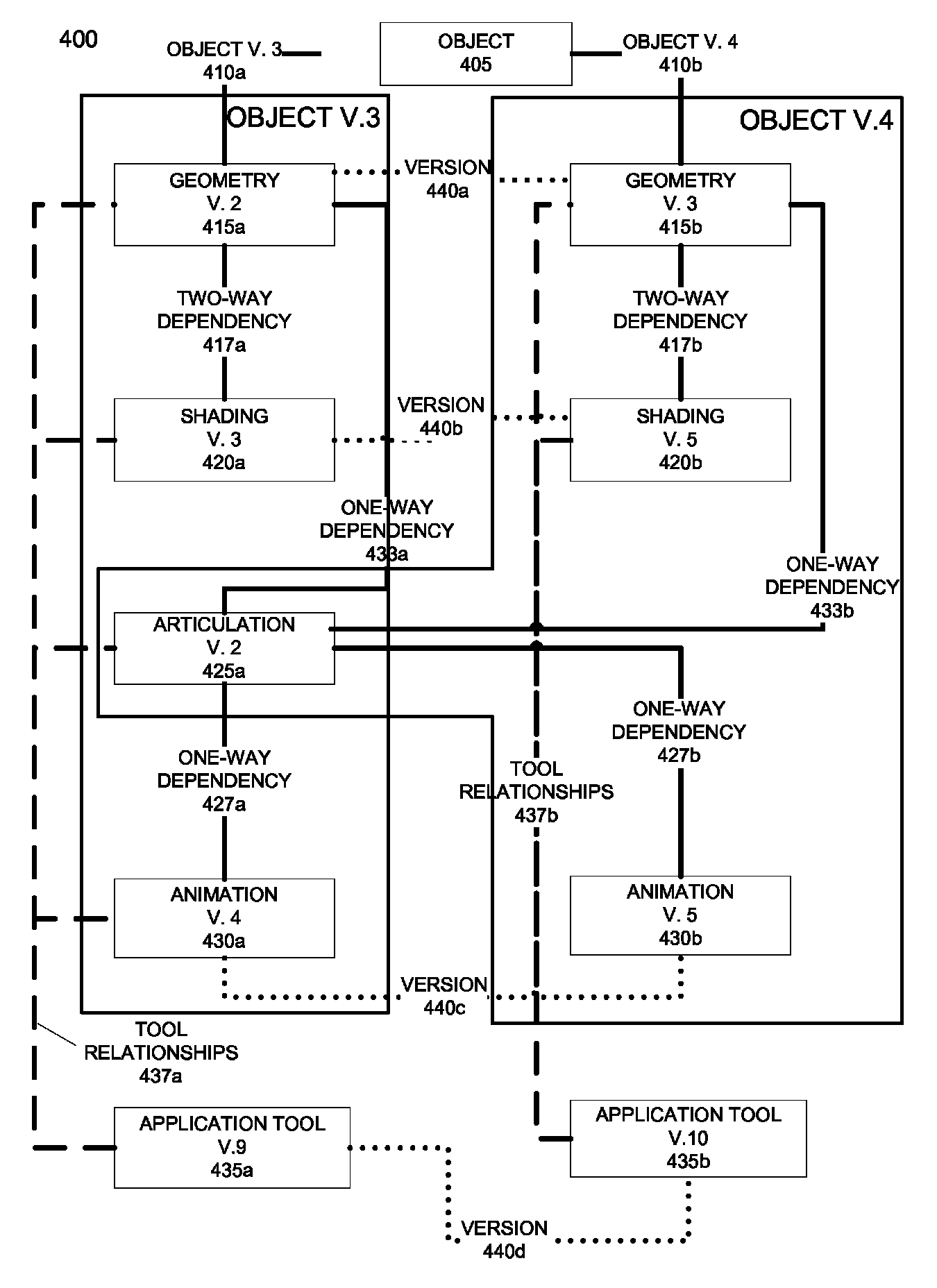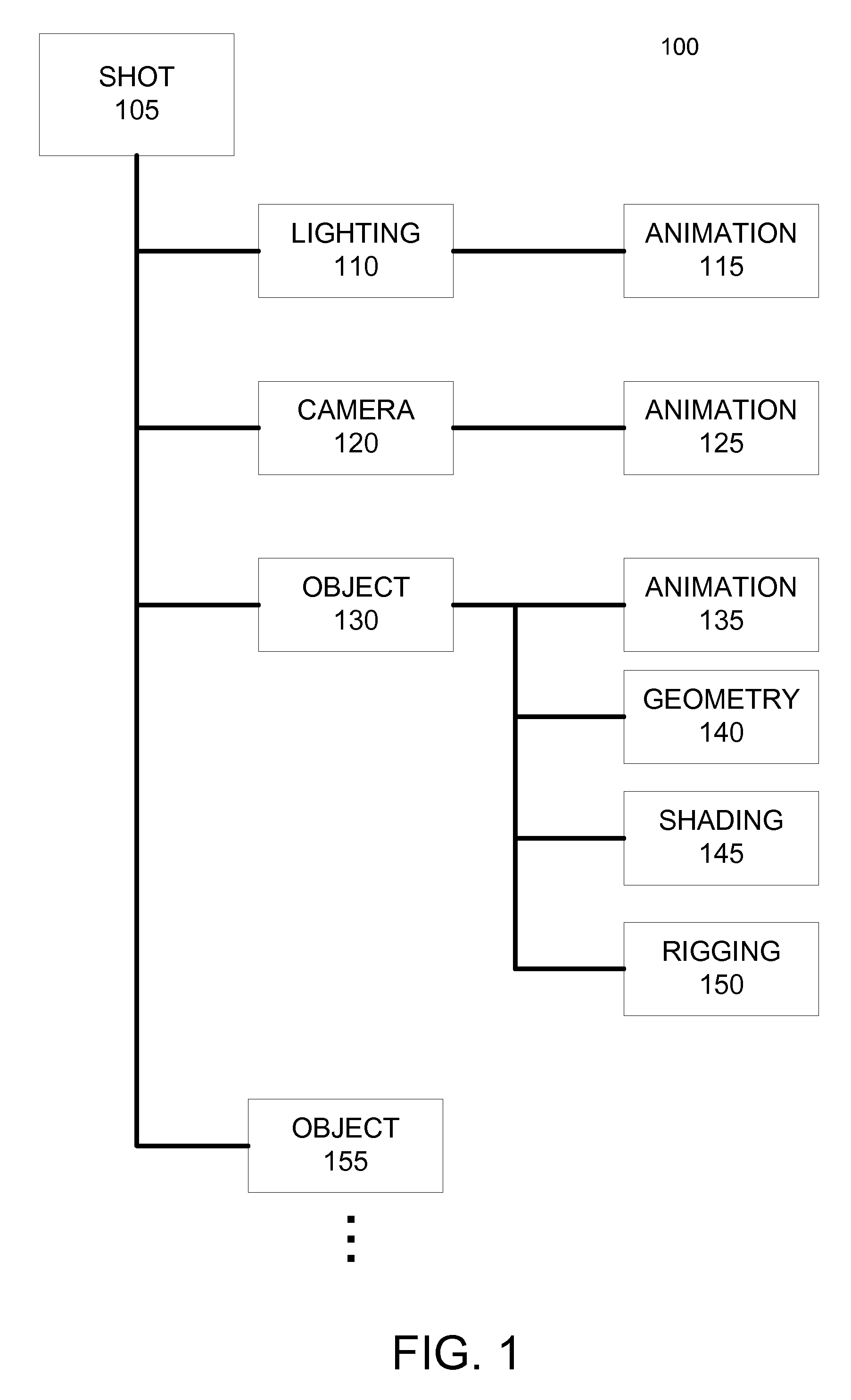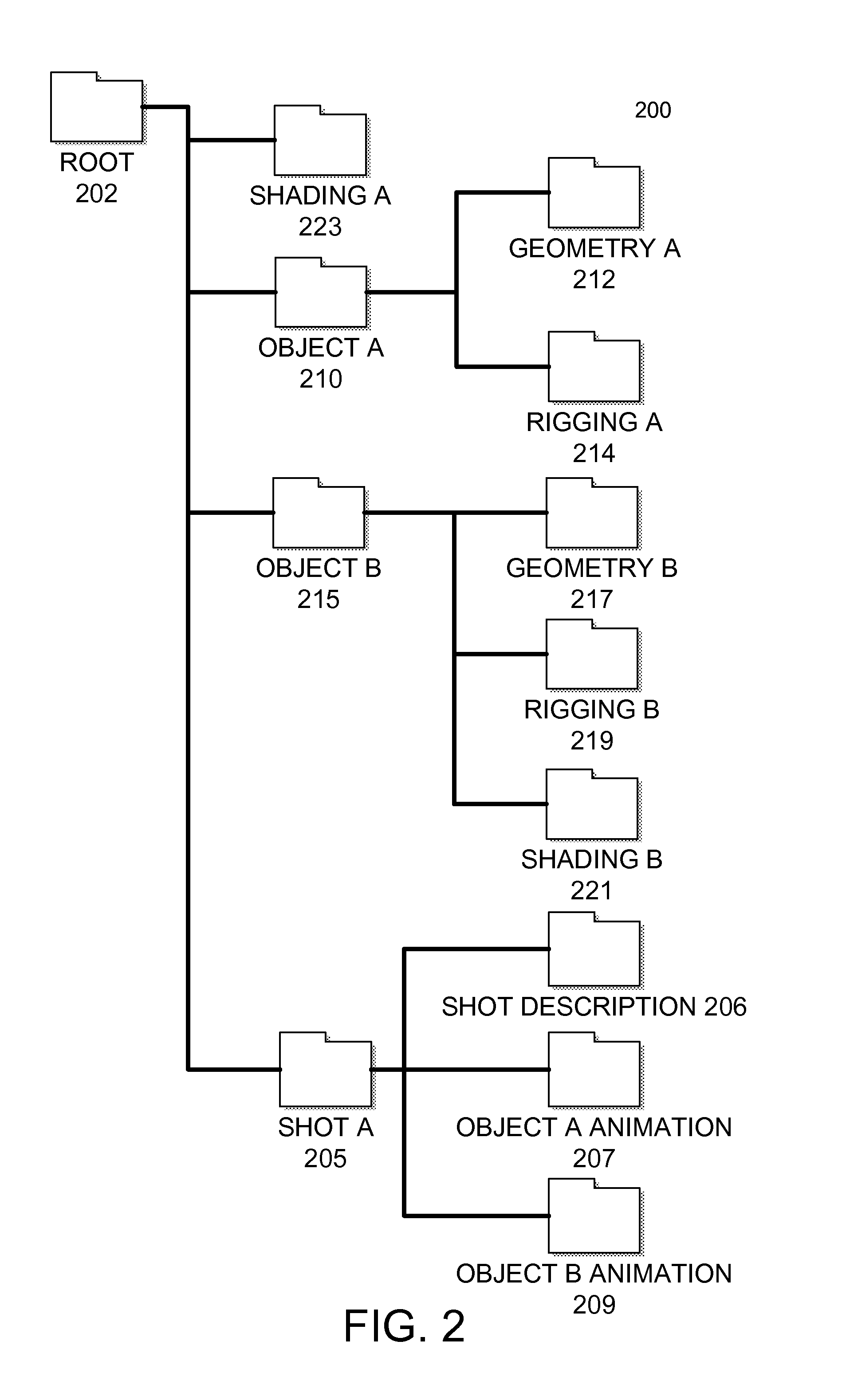Typed dependency graphs
a dependency graph and type technology, applied in the field of typed dependency graphs, can solve the problems of complex complex dependencies between digital assets and each other, and complicated relationship between digital assets, so as to avoid compatibility problems
- Summary
- Abstract
- Description
- Claims
- Application Information
AI Technical Summary
Benefits of technology
Problems solved by technology
Method used
Image
Examples
Embodiment Construction
[0031]FIG. 1 illustrates an example logical dependency relationship 100 between digital assets. Logical dependency relationship includes a shot 105 specifying an image or animated sequence to be created. Shot 105 may be one of many shots within a production. In this example, shot 105 includes lighting data 110, which specifies the attributes of one or more lights. Additionally, animation data 115 specifies the values at any given time for the attributes of the lights specified by lighting data 110, which can include attributes such as the position, color, direction, and intensity of the lights.
[0032]Camera data 120 specifies the attributes of one or more cameras in the shot 105. Each camera represents a viewpoint from which one or more images of the shot 105 can be generated by a renderer. Animation data 125 specifies the values at any given time for the attributes of cameras associated with the shot 105. These attributes can include the position and orientation of a camera as well ...
PUM
 Login to View More
Login to View More Abstract
Description
Claims
Application Information
 Login to View More
Login to View More - R&D
- Intellectual Property
- Life Sciences
- Materials
- Tech Scout
- Unparalleled Data Quality
- Higher Quality Content
- 60% Fewer Hallucinations
Browse by: Latest US Patents, China's latest patents, Technical Efficacy Thesaurus, Application Domain, Technology Topic, Popular Technical Reports.
© 2025 PatSnap. All rights reserved.Legal|Privacy policy|Modern Slavery Act Transparency Statement|Sitemap|About US| Contact US: help@patsnap.com



